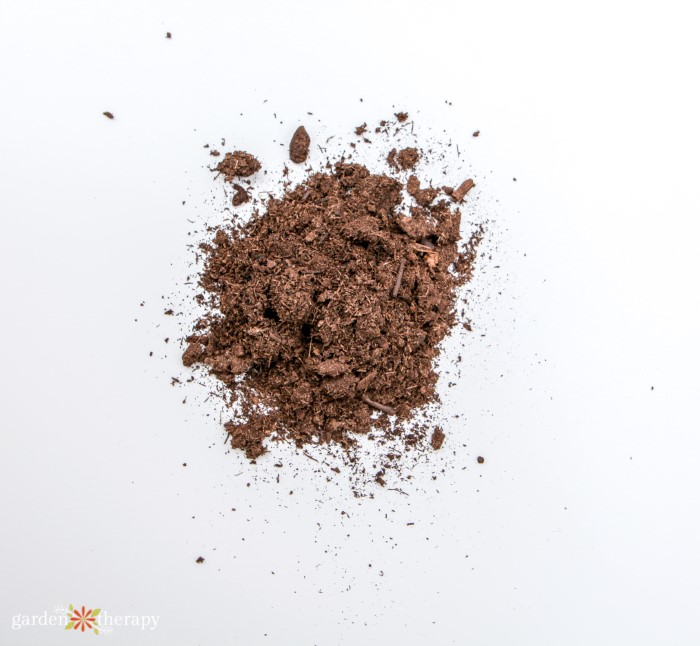If you’re investigating making your own soil or wondering what your bagged soil is composed of, you’ve probably seen peat moss and coco coir on the ingredient list. These are common soil ingredients, but they’re not one and the same! Here are the main differences and similarities between peat moss vs coco coir.

In this article, we’ll cover:
- What is Peat Moss?
- What is Coconut Coir?
- Peat Moss vs Coco Coir
- Coco Coir at a Glance
- Peat Moss at a Glance
- FAQ About Peat Moss and Coco Coir
- More Posts to Read
What is Peat Moss?
Peat moss is one of the most popular ingredients for making your own potting mix for container gardens. It is lightweight, sterile, highly absorbent and porous enough for airflow while retaining water.
While very easy to use, it does have a few drawbacks. It’s naturally acidic, so it needs lime to neutralize it for plants that don’t like acidic soil. It also is hard to rehydrate when dried out. You’ll notice this when you forget to water your plants, and your soil turns into a solid brick.
The biggest drawback, however, is the sustainability issues surrounding peat moss.
Sphagnum peat moss comes from bogs. Bogs are home to wildlife and rare plants and store carbon, which is necessary for the fight against climate change. Even when harvested responsibly, replacing the lost peat moss takes many years.
You can learn more about the sustainability issues with peat moss here.

What is Coconut Coir?
Coconut coir is made from the waste products of coconut husks. It has exceptional water-holding ability, is lightweight, and is often marketed as a sustainable alternative to peat moss. It has a neutral pH but doesn’t hold on to nutrients as well.
There is a wide range of horticultural coconut coir products; some brands may not perform well in potting soil, while others may be valuable addition. Before making a large investment in purchasing any coconut coir, test a few brands to find one that works for you.

Peat Moss vs Coco Coir
So, which of the two is better for the garden? Here’s a breakdown of the good and negative features of peat moss vs coco coir.
Coco Coir at a Glance
- By product (finds a use for what typically might go to waste)
- Great water retention
- Lots of airflow
- Neutral pH
- Completely sterile and contains no soil microbes
- Wide range of performance depending on brands (good and bad)

Peat Moss at a Glance
- Great water retention
- Lots of aeration
- Sterile from microbes, seeds, salts, and metals
- Reduces soil leaching
- Acidic pH
- Big sustainability issue
- Needs rehydration and makes soil stiff when dry

The verdict? You can certainly use both, but I tend to avoid sphagnum peat moss due to its sustainability issues. Coco coir tends to work just as well as peat moss (if not better) when mixed with compost, rice hulls, or perlite.
FAQ About Peat Moss and Coco Coir
Coconut coir is promoted as a peat moss alternative, often marketed as a ‘peat’ product. There is some debate on whether it is truly more sustainable as the coir needs to be processed, which uses resources and can affect workers’ health, not to mention the long distances it will travel when shipped to temperate climates.
Most definitely! To make a peat moss alternative, I mix together 1 part coconut coir with 1 part compost and 1 part rice hulls or perlite. Together, the 3 act like peat moss, except it doesn’t dry out and is pH neutral.
In most cases, coco coir is cheaper than peat moss. Since coco coir is a by-product, there’s more than enough to be sold cheaply at garden centres.
Peat moss needs to be specifically harvested. In Canada, peat moss harvesting is highly regulated, making the process a little more intensive, which adds up to a higher price point.
Both coco coir and peat moss are popular ingredients in DIY potting soil recipes and can be mixed together.

When finding the best soil ingredients and recipes, know where your products come from. The more local, organic, and sustainable it is, the better. Depending on your current soil and location, what works best for one person may differ from another!




